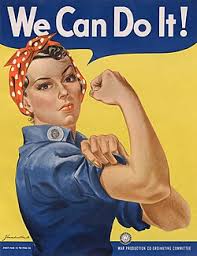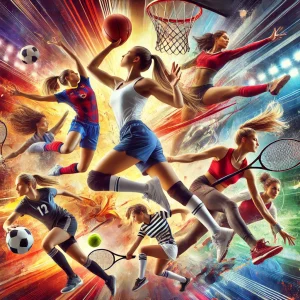CHAPTER 1
PART 1- The Fundamentals
Sports Promote Character – But Is It Always True?

I strongly believe that sports have the power to shape character. Through sports, I have learned valuable life skills such as teamwork, discipline, and perseverance. Engaging in competitive activities has helped me develop a strong mentality to face challenges. Whether I win or lose, sports teach me how to handle both success and failure with grace. They also encourage me to be brave, independent, and reliable, as I must take responsibility for my performance. Moreover, staying active in sports keeps me physically and mentally healthy, which positively affects my daily life.
However, I also realize that sports do not always promote good character for everyone. In some cases, excessive competition can lead to aggression, arrogance, or even dishonesty. I have seen players who cheat or use unfair means just to win. Some athletes prioritize victory over ethics, which contradicts the idea that sports always build character. Additionally, the pressure to succeed can sometimes create anxiety and stress rather than mental strength. For some, sports become a source of frustration rather than motivation.
From a different perspective, not everyone has access to sports or a supportive environment. While I may find sports beneficial, others might experience discrimination, injuries, or exclusion that negatively impact their confidence. Instead of promoting character, sports could become a source of inequality or frustration for them.
While, I personally believe that sports can build character, I also acknowledge that they do not have the same effect on everyone. The values learned from sports depend on how they are played, the environment, and the mindset of the individuals involved.
How Sport and Social Justice Co-Exist
“Breaking the Cycle: Rethinking Health Disparities through an Intersectional Lens”
The authors of the article argue that the “bodies-at-risk” discourse, which frames marginalized groups as inherently deficient or at risk regarding health, has serious implications for how health disparities are understood and addressed. This discourse often labels people of color, those from lower socioeconomic backgrounds, and individuals with disabilities as “at risk,” reinforcing harmful stereotypes. For example, Black students in schools are often labeled as “at-risk” due to perceived academic and behavioral challenges, ignoring the broader structural issues, such as racism or poverty, that contribute to their experiences. The same logic is applied in public health, where groups like Black or Latinx communities are often depicted as having cultural or biological deficits, without considering the effects of systemic inequalities they face.
This refusal to view health disparities through a social justice lens leads to an oversimplified view of health problems. It reduces complex issues, like chronic illness in impoverished communities, to individual failures or cultural deficiencies, while ignoring the societal and environmental factors that contribute to poor health outcomes. For instance, when addressing childhood obesity, interventions that focus on personal responsibility often fail to consider the lack of access to healthy food or safe spaces for physical activity in low-income neighborhoods, thus further marginalizing already disadvantaged groups.
The article stresses the need for a more inclusive, intersectional approach that recognizes how different aspects of identity—such as race, gender, social class, and disability—intersect to shape people’s experiences with health. For instance, children of color with disabilities may face compounded barriers to accessing quality education or healthcare, leading to worse health outcomes. The authors suggest that instead of focusing on deficits, researchers and policymakers should focus on the strengths and resilience of marginalized communities. By doing so, interventions can be more culturally relevant and effective, aiming for greater equity and social justice. In this way, health disparities can be addressed in a way that values the lived experiences of those most affected by them.
PART 2-Introducing Sport Feminism

Feminism: My Strength, My Voice
Feminism, to me, is not just a word; it is a way of life. It is the unshakable belief that I have the power to define my own destiny, free from the limits that society has tried to impose. It is the fire that fuels my courage, the force that drives my independence, and the strength that builds my resilience.
When I look at the image of Rosie the Riveter, I see myself. Her rolled-up sleeves symbolize readiness, a refusal to back down from any challenge. Her determined gaze speaks to the unwavering spirit that I carry within me. She is not just an image—she is a reminder that I, too, can stand strong, take action, and break barriers.
Feminism means independence, the ability to make my own choices without permission or apology. It means resilience, standing tall even when the world tries to push me down. It means courage, speaking my truth even when my voice shakes.
Every day, I embody the spirit of feminism by believing in my worth, by lifting others up, and by refusing to accept limitations. I am strong. I am capable. And like Rosie, I know that I can do it and I will Do it!
Feminism and Sport: A Multifaceted Approach

In exploring feminism’s role in sport, the authors discuss several feminist perspectives, each offering unique insights into gender relations, power structures, and inequality. These perspectives include liberal feminism, socialist feminism, poststructural feminism, third-wave feminism, and intersectional feminism. Each approach contributes to our understanding of gender in sport, shaping the way we analyze and address issues of access, representation, and power dynamics.
- Liberal Feminism: Fighting for Equal Opportunity: Liberal feminism, which gained prominence in the 1970s and 1980s, focuses on achieving equal opportunities for women in sport by challenging legal and structural barriers. This perspective argues for increased access to sports participation, better funding, and equal representation in coaching and leadership roles. However, despite significant progress—such as greater female participation in the Olympics—many of these challenges remain today, particularly in media representation and leadership positions.
- Socialist Feminism: Linking Gender and Class: Socialist feminism expands the discussion by connecting gender inequality to economic and class-based oppression. During the 1980s, socialist feminists examined how working-class women faced additional barriers to sport due to financial constraints, lack of resources, and the commercialization of athletics. In today’s globalized sports landscape, issues such as corporate sponsorships, celebrity culture, and the commodification of athletes highlight the continued relevance of socialist feminist concerns.
- Poststructural Feminism: Questioning Identity and Difference: Poststructural feminism takes a more fluid approach, emphasizing how gender identities are socially constructed rather than fixed. This perspective highlights the diversity of experiences among women in sport, challenging traditional narratives that assume a singular female experience. However, critics argue that poststructural feminism sometimes focuses too much on difference at the expense of addressing real material inequalities.
- Third-Wave Feminism: Embracing Multiplicity and Activism: Inspired by African American feminist thinkers like bell hooks, third-wave feminism blends elements of poststructuralism with second-wave critiques of beauty culture and power structures. This perspective acknowledges that empowerment, pleasure, and activism can coexist, moving beyond rigid definitions of gender and sport. Third-wave feminism pushes for inclusivity and recognizes the need to address issues such as body image, sexualization, and abuse in sports.
- Intersectional Feminism: Understanding Overlapping Oppressions: Intersectional feminism, a more recent development, examines how gender intersects with race, class, disability, and other social categories. Scholars like Patricia Hill Collins and researchers in sport studies argue that focusing on a single category (such as just gender or just race) overlooks the complexities of oppression in sports. For example, the experiences of Black and minority ethnic women, disabled athletes, and older women in sports remain under-researched areas that require deeper intersectional analysis.
While new feminist approaches continue to emerge, the authors stress that older concerns remain relevant. The gender pay gap, underrepresentation of women in coaching, media bias, and the sexualization of female athletes demonstrate that inequality persists. Sports feminism must continue bridging theory with practice, ensuring that research leads to real-world changes in the sporting landscape.



